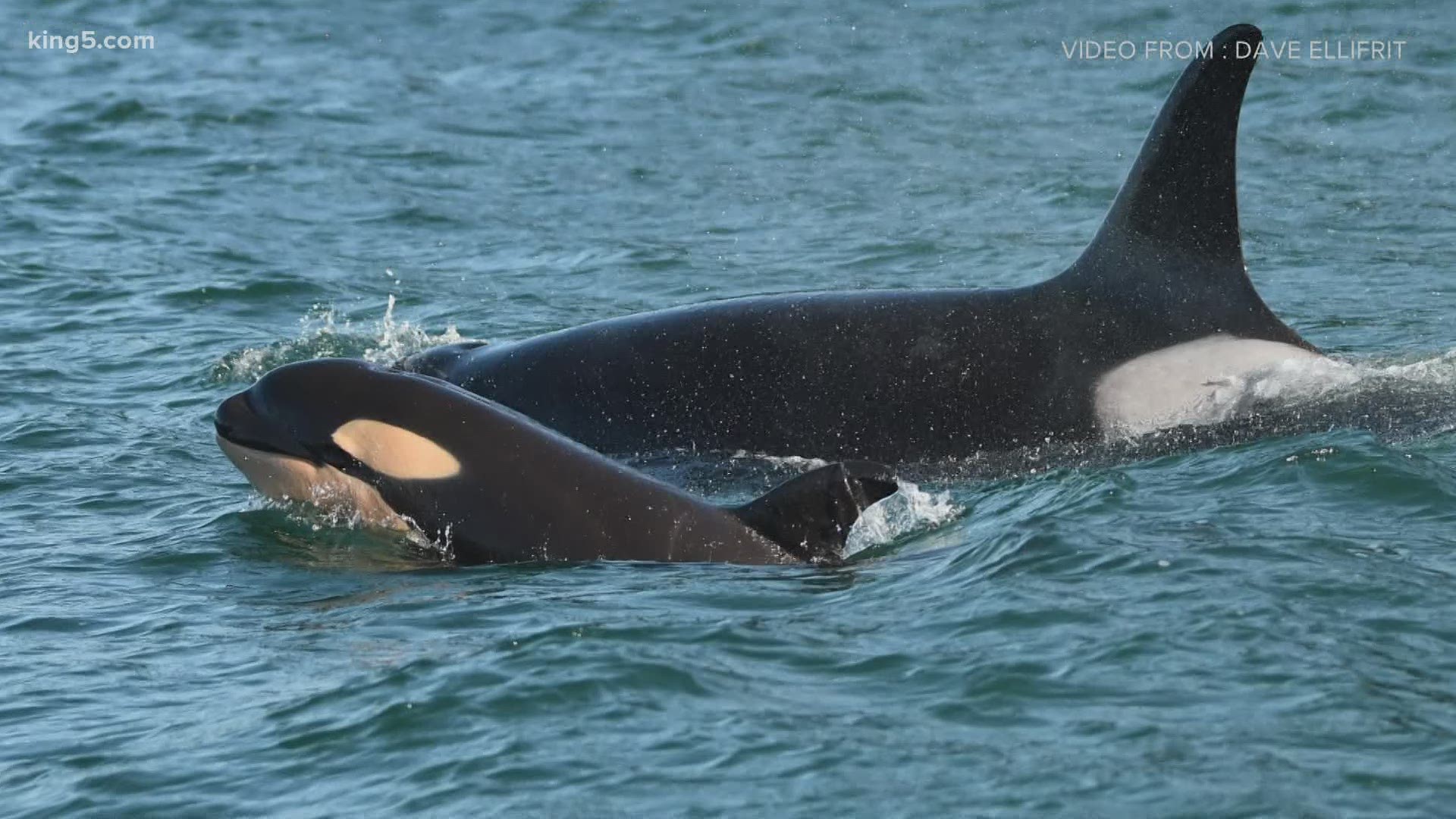Boaters on the Puget Sound are being asked to give the Southern Resident orcas a little more space on the water.
With the addition of a new calf amongst the endangered Southern Resident killer whales, the Washington Department of Fish and Wildlife (WDFW) asked recreational boaters Monday to steer clear of the orcas and give them extra space.
Orca L86 was spotted with a new calf, L125, last week. Only about half of newborn orcas survive, but if this one does it will boost the population to 75.
“By giving the new calf and its extended family more space and quieter waters so they can find salmon, boaters can help give this little one the best chance of thriving in what continues to be a difficult time for the endangered orcas,” said Nora Nickum, ocean policy manager with the Seattle Aquarium.
Winter has become an important feeding time for Southern Resident orcas. Their ability to catch prey during the colder months is critical to maintaining their health until chinook salmon become more plentiful, according to WDFW.
“While this news of this calf gives us all hope for the future of these iconic animals, we need to continue to do everything we can to help give these special Southern Resident orcas the best chance at survival,” said Kelly Susewind, WDFW director. “This calf's mother, L86, needs to forage so she has plenty of nutrition she can pass on to the new baby.”
The Department of Fish and Wildlife says boat traffic can interrupt the echolocation clicks the whales use to hunt fish and research from the National Oceanic and Atmospheric Administration (NOAA) Fisheries indicates this is especially true in female killer whales. The females often stop foraging when boats approach within 400 yards, which is most concerning in pregnant or nursing mothers supporting calves.
Regulations signed into law in 2019 require boats to stay at lest 300 yards from Southern Resident killer whales and at least 400 yards out of their path or behind them. Boats also have to reduce their speed to seven knots within a half-mile of a whale. The only exception is for defined daily periods in July through September.

